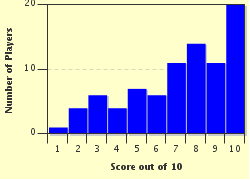Quiz Answer Key and Fun Facts
1. Known to his own people as Mahpiya Luta, this Oglala Lakota war chief was the mastermind behind the Fetterman Fight of 21 December, 1866, which led the United States to abandon the Bozeman Trail and withdraw from the forts in Montana's Powder River area. He was the only Native leader to win his war against the U.S. By what name do we know him?
2. Sadly, Native setbacks were often brutal. The Mystic Massacre of 1637 and the Treaty of Hartford destroyed the once-powerful Pequot nation. All native survivors of the Pequot War were scattered and/or enslaved and the speaking of Pequot was forbidden. In what current states did English settlers, along with their Narragansett and Mohegan allies, effectively wipe out the Pequots?
3. Back to more positive results. The Battle of the Wabash in 1791 was the largest victory ever won over the United States by Native Americans. Led by Little Turtle of the Miamis, Buckongahelas of the Delawares, and Weyapiersenwah of the Shawnees, Native forces allowed only 24 of the 1,000 American officers and men sent against them to escape unharmed. If you are a fan of ice hockey in Ohio, perhaps you can identify the name white history knows for the Shawnee chief.
4. Eighteen years after defeat at Fallen Timbers, another Shawnee war chief was offered the rank of brigadier general by the British after he helped them capture Detroit in the War of 1812. Along with his brother, known as The Prophet, he fought against the United States, but was finally killed in a Canadian action called The Battle of the Thames in 1813. Who was this great warrior who is honored today by a bust at the U.S. Naval Academy?
5. In 1832 an Illinois militiaman named Lincoln found himself fighting in a war against a Sauk chief attempting to drive whites out of tribal lands along the Mississippi River. Although the war named in his honor was short, his legacy includes dozens of place names throughout Wisconsin, Illinois, and Iowa. Who was this great leader?
6. The son of a white woman captured by the Comanche, no warrior was ever more feared than this leader while actively fighting the whites. But once defeated, he took a new role as the leader of efforts to give the Comanches equal status with the whites of Oklahoma while still maintaining Comanche culture in areas such as hair length and peyote use. He was so successful that a town and a railroad were named for him, and he became a wealthy rancher and a powerful force in Comanche and white society.
7. The Pueblo Revolt of 1680 was a very successful example of resistance, albeit to the Spanish in Santa Fe, New Mexico. The revolt resulted in the abandonment of the Santa Fe area by the Spanish and their retreat to the area of El Paso, Texas. Not affiliated with the Vatican, what was the name of the Pueblo leader?
8. On Christmas Eve of 1835, over 100 U.S. troops were sent out of Florida's Fort King in pursuit of a Seminole who refused to sign surrender treaties. Three days later, all but three soldiers were dead and the Second Seminole War was underway. Who was this courageous holdout who was only captured by treachery in 1837 when he came to parley with American General T.S. Jesup, who guaranteed safe passage for the Seminole warrior through the use of a white flag?
9. The surrender in 1886 of the Chiricahua Apache Geronimo was brought about in part with the help of 60 of his fellow Chiricahua warriors whom the Army enlisted as scouts, led by 40-year-old Chatto. It was Chatto and an American officer named Charles Gatewood who finally persuaded Geronimo to come in for the last time. What happended to the scouts who had served for the Army?
10. In 1890 the "Battle of Wounded Knee" in South Dakota ended the "Indian Wars," when over 200 men, women, and children were killed by the 7th Cavalry. The threat of what form of resistance were these natives exhibiting that necessitated the Army's attack on them in that place and time?
Source: Author
shvdotr
This quiz was reviewed by FunTrivia editor
bloomsby before going online.
Any errors found in FunTrivia content are routinely corrected through our feedback system.

